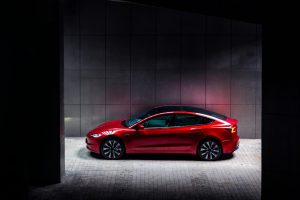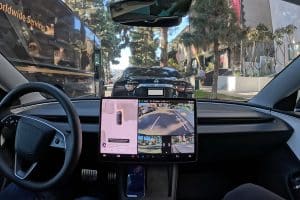- 💼 Tesla is reportedly reducing production output at Gigafactory Shanghai, aiming to align manufacturing levels with market demand.
- 🏭 The decision affects both the Model 3 sedan and Model Y crossover, the two vehicle models produced at the factory.
- 📉 The production cut involves scaling back work days from 6.5 days per week to five days per week, as indicated in early March.
- 🌐 The electric vehicle market in China differs significantly from the U.S., with a wide range of EV models and companies competing.
- 💰 Consumers in China prioritize bargains over quality, features, and vehicle technology, contributing to intense competition in the market.
- 🚗 Tesla is working on a next-generation platform to lower vehicle costs but is still over a year away from its introduction.
- 📈 Tesla anticipates lower growth rates in 2024 and plans to combat this with a new EV rollout in late 2025, aiming to reintroduce higher sales figures.
- 📊 Despite adjustments, Tesla previously raised Giga Shanghai’s estimated annual vehicle capacity in October 2023.
- 📉 Recent data indicates a year-over-year decrease in insurance registrations for Tesla vehicles in China, highlighting market challenges.
As the electric vehicle (EV) market continues to evolve, Tesla’s production decisions in key regions like China become increasingly crucial. Recently, reports have emerged suggesting that Tesla is adjusting its production output at Gigafactory Shanghai, a move that could have significant implications for the company’s operations and the broader EV landscape. Let’s delve into the details to understand the rationale behind Tesla’s decision and its potential impact.
Understanding the Shift
Tesla’s decision to reduce production output at Gigafactory Shanghai reflects a strategic response to market dynamics. By aligning manufacturing levels with demand, the company aims to optimize its operations and maintain competitiveness in a rapidly evolving landscape. The move, which affects both the Model 3 sedan and Model Y crossover, underscores Tesla’s commitment to operational efficiency and market responsiveness.
Market Dynamics in China
The electric vehicle market in China presents unique challenges and opportunities. With a diverse array of EV models and companies vying for market share, competition is intense. Moreover, Chinese consumers prioritize affordability and value, often prioritizing bargains over brand loyalty or advanced features. This dynamic market landscape necessitates a nuanced approach from automakers like Tesla, requiring them to balance innovation with cost-effectiveness.
Tesla’s Strategic Initiatives
In response to market dynamics, Tesla is actively pursuing strategic initiatives to maintain its competitive edge. The company’s focus on developing a next-generation platform aimed at lowering vehicle costs signals a forward-thinking approach to address evolving consumer preferences. However, the timeline for the introduction of this new platform suggests that Tesla is navigating a transitional phase, balancing current market demands with future innovation.
Anticipated Growth Trajectory
Tesla’s decision to trim production output comes amid projections of lower growth rates in 2024. While this may raise concerns among investors and stakeholders, Tesla remains optimistic about its long-term prospects. The planned rollout of a new EV in late 2025 reflects the company’s confidence in its ability to regain momentum and reinvigorate sales figures. By strategically timing new product launches, Tesla aims to capitalize on emerging market opportunities and maintain its position as a market leader.
Implications for Gigafactory Shanghai
The adjustment in production output at Gigafactory Shanghai has broader implications for Tesla’s operations in China. Despite previous capacity expansions, recent data indicating a year-over-year decrease in insurance registrations for Tesla vehicles highlights ongoing challenges in the market. However, Tesla’s proactive approach to adapt to changing market conditions underscores its resilience and adaptability.
Conclusion: Navigating Market Dynamics
In conclusion, Tesla’s production adjustments at Gigafactory Shanghai reflect a strategic response to evolving market dynamics in China’s electric vehicle landscape. By aligning manufacturing levels with demand and pursuing strategic initiatives, Tesla aims to maintain its competitive edge and capitalize on emerging opportunities. As the EV market continues to evolve, Tesla’s ability to navigate these challenges will be pivotal in shaping its future success.





